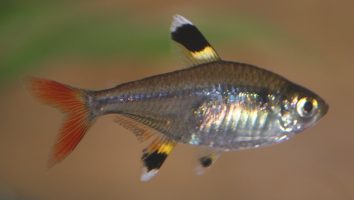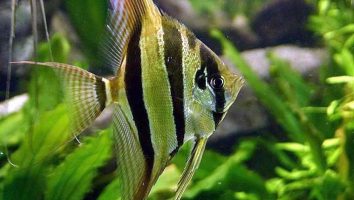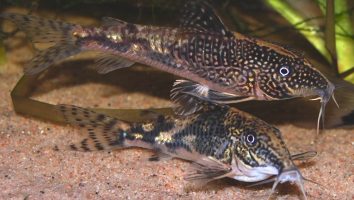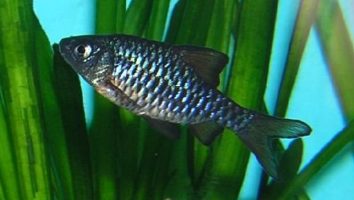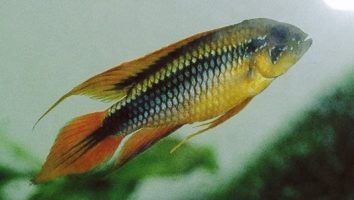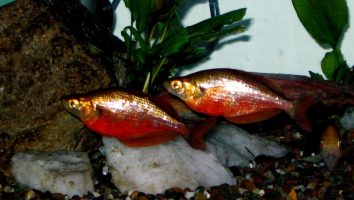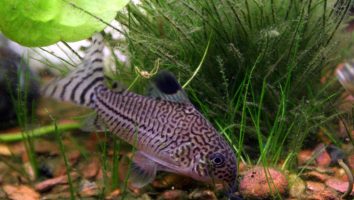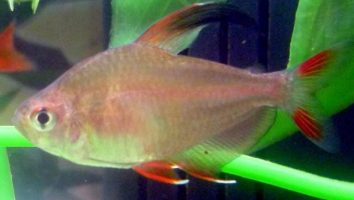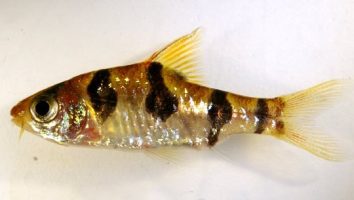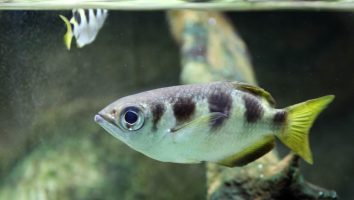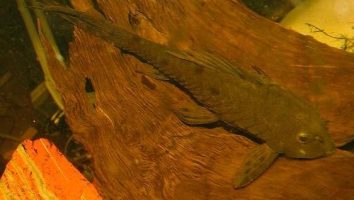The common dace is a freshwater fish that is found in Europe and Asia. It is a popular fish for anglers and is also kept as a pet.
This guide will teach you everything you need to know about common dace care. You’ll learn about their diet, size, lifespan, and more!
Table of contents
Species overview
The common dace (scientific name: Leuciscus leuciscus) is a freshwater fish that’s found throughout a large portion of Europe. It’s also been introduced to various parts of North America, Asia, and even Australia.
This fish prefers slow-moving waters with a lot of vegetation. They’re often found in ponds, lakes, and rivers.
The common dace is an omnivore, so their diet consists of both plants and small animals.
This fish is a popular choice for anglers because they’re relatively easy to catch. They’re also a popular choice for aquarists because they’re hardy and can adapt to a wide range of water conditions.
Appearance
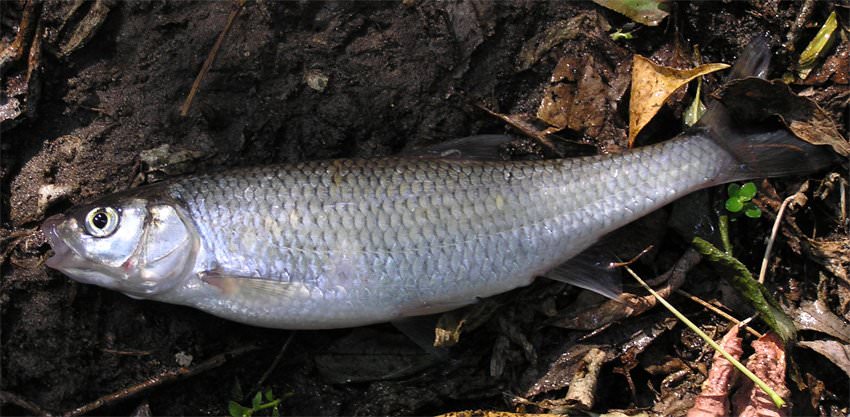
The common dace is a freshwater fish that is a member of the carp family. The fish is silver in color with a lighter belly. The fins are a dark gray or black. The fish has a long body and can grow to be about 18 inches in length. The common dace is found in Europe and Asia.
Lifespan
The average lifespan of a common dace is 3 to 5 years. However, they can live up to 10 years in captivity if they’re well cared for.
Common dace are a hardy species of fish, but they’re still susceptible to the same problems that can shorten the lifespan of any fish.
Poor water quality, stress, and a suboptimal diet are all things that can lead to an early death for these fish.
Size
The average size for a common dace is about 10 inches, but they can grow up to 12 inches long.
Tank
Tank Size
The recommended minimum tank size for common dace is 20 gallons. If you want to keep a school of 5 or more fish, you will need an additional 2 to 4 gallons per fish.
Water Parameters
The common dace prefers cool water with a moderate current. They are found in streams and rivers with a gravel or sandy bottom.
To maintain a healthy environment, keep the water temperature between 60 and 70 degrees Fahrenheit. The pH should be between 6.5 and 7.5. The water hardness should be between 4 and 8 dGH.
What To Put In Their Tank
The common dace is a schooling fish, which means they do best when kept in groups. In the wild, these fish can be found in large rivers and streams.
To recreate their natural habitat, we recommend a tank that is at least 50 gallons. If you’re keeping them in a smaller tank, you might not be able to keep as many fish.
As for the inside of the tank, these fish prefer a lot of open swimming space with some hiding spots. Driftwood, rocks, and plants can all be used to create these hiding spots.
Just make sure that any plants you use are well-rooted. Common dace are known to uproot plants when they are searching for food.
The substrate in their tank can be either sand or gravel. These fish are not picky when it comes to the type of substrate.
Common Diseases
There are a few diseases that are relatively common in common dace, but the most common one is definitely white spot disease.
This is caused by a parasite called Ichthyophthirius multifiliis, and it results in the formation of white spots on the body of the fish. It’s a very contagious disease that can quickly spread through an entire tank, so it’s important to treat it as soon as possible.
Other relatively common diseases include tail and fin rot, as well as gill flukes. Tail and fin rot usually occur when the fish are kept in water that is too dirty, and it can be treated by changing the water and adding a bit of salt to the tank.
Gill flukes are parasites that attach themselves to the gills of the fish, and they can cause difficulty breathing and other respiratory problems. They can be treated with a special medication that is available at most pet stores.
Behavior & Temperament
The common dace is a schooling fish, so it does best when it’s in a group. It’s a peaceful fish that won’t bother other tank mates. In fact, it’s pretty shy. So, it’s important to have plenty of hiding places in your tank for this little guy.
The common dace is an active swimmer. It loves to play in the currents, so a tank with a good filtration system is a must. This fish is also a fan of plants. So, be sure to include plenty of live plants in your tank to give your common dace a place to hide.
When it comes to food, the common dace is not picky. It will eat just about anything you give it. But, it’s important to have a varied diet to keep your fish healthy. A good mix of live, frozen, and flake food will do the trick.
Tank Mates
The common dace is a schooling fish, which means it does best when kept in groups. In the wild, these fish school together for protection. There are several benefits to keeping them in groups in the aquarium as well.
For one, it helps reduce aggression and stress levels. When fish are in a group, they feel safer and are less likely to pick on each other.
It also makes the fish more active. In the wild, fish are constantly on the move to avoid predators. When they’re in a group, they can move around more freely without feeling as though they’re in danger.
Common dace are also surface-dwelling fish. This means they like to swim near the top of the water column. As a result, you’ll want to choose tank mates that occupy different parts of the tank.
Some good common dace tank mates include:
- Guppies
- Platies
- Mollies
- Swordtails
- Danios
- Tetras
Breeding
The best time to start breeding common dace is in the spring. That’s when the water temperatures are just right for them.
To get started, you’ll need to set up a breeding tank. It should be at least 20 gallons in size. Then, you need to add some plants.
Common dace prefer live plants. That’s because they like to lay their eggs on them. Java moss is a good option. You can also use a spawning mop.
Once the plants are in place, you need to adjust the water temperature. It should be between 68 and 74 degrees Fahrenheit. Then, you need to add some rocks or gravel to the bottom of the tank.
Finally, you need to add a filter. Make sure that it’s one that won’t suck up the eggs!
When everything is in place, it’s time to add the fish. You’ll need one male for every two females.
Once the fish are in the tank, you need to feed them. Live foods are best, but you can also use frozen foods.
After a few weeks, you should start to see the females getting plumper. That’s a good sign that they’re ready to spawn.
When they’re ready, the females will lay their eggs on the plants. The males will then fertilize them.
Once the eggs are fertilized, the parents will eat them. That’s why it’s important to remove the adults after spawning.
If you don’t, the fry won’t stand a chance.
The eggs will hatch in about a week. Once they hatch, you can feed them live foods or baby brine shrimp.
Conclusion
The common dace is a great fish for beginner aquarists. They’re easy to take care of and get along well with other community fish.
They’re also a hardy fish that can withstand a wide range of water conditions, which is always a plus.
Overall, we think the common dace is a great choice for anyone looking for a low-maintenance fish that will add a little bit of color and interest to their tank.

